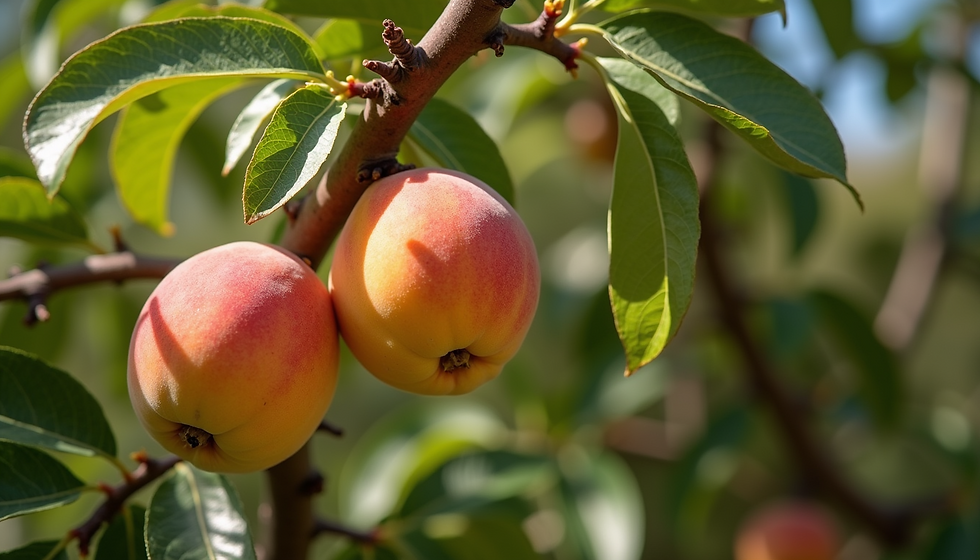Exploring the Benefits of Growing Chinotto Trees in Perth Climate
- stuart taylor

- 12 minutes ago
- 3 min read
Growing fruit trees in Perth can be a rewarding experience, especially when choosing varieties that thrive in the local climate. The chinotto tree, a lesser-known citrus variety, offers unique benefits for gardeners and homeowners in Perth. This post explores why the chinotto tree is a great choice for this region, how to care for it, and the advantages it brings to your garden and lifestyle.

What Is a Chinotto Tree?
The chinotto tree (Citrus myrtifolia) is a small citrus tree native to the Mediterranean region. It produces small, bitter-sweet fruits that look like tiny oranges but have a distinct flavor often used in Italian beverages and culinary recipes. Unlike common sweet oranges, chinotto fruits are prized for their aromatic zest and juice, which add a unique twist to drinks and dishes.
This tree grows to about 3 to 4 meters tall and has dense, dark green foliage. It is evergreen, providing year-round greenery and a pleasant citrus scent in your garden. The chinotto tree is also known for its resilience and adaptability, making it suitable for Perth’s Mediterranean climate.
Why Chinotto Trees Suit Perth’s Climate
Perth experiences hot, dry summers and mild, wet winters, a climate that matches well with the chinotto tree’s natural preferences. Here are some reasons why chinotto trees thrive in Perth:
Drought Tolerance
Chinotto trees can withstand periods of low water once established. This makes them ideal for Perth’s dry summer months, reducing the need for constant irrigation.
Heat Resistance
The tree tolerates high temperatures common in Perth summers without significant stress or fruit drop.
Mild Winter Hardiness
While chinotto trees prefer frost-free environments, Perth’s mild winters rarely dip below freezing, allowing the tree to survive and produce fruit year after year.
Soil Adaptability
Chinotto trees grow well in well-drained soils, which are common in many Perth gardens. They tolerate sandy and loamy soils, typical of the region.
These factors make the chinotto tree a low-maintenance and reliable choice for local gardeners.
How to Grow and Care for Chinotto Trees in Perth
To get the best results from your chinotto tree, follow these practical tips:
Planting Location
Choose a sunny spot with some protection from strong winds. A sheltered courtyard or garden corner works well.
Soil Preparation
Improve soil drainage by mixing organic compost into the planting hole. Avoid heavy clay soils that retain water.
Watering
Water young trees regularly to establish roots. Mature trees need watering during extended dry spells but avoid waterlogging.
Fertilizing
Use a balanced citrus fertilizer in early spring and late summer to support healthy growth and fruit production.
Pruning
Light pruning after fruit harvest helps maintain shape and encourages new growth. Remove any dead or crossing branches.
Pest and Disease Management
Monitor for common citrus pests like aphids and scale insects. Use organic insecticidal soap if needed. Good air circulation reduces fungal risks.
By following these steps, your chinotto tree will flourish and provide fruit for many years.

Benefits of Growing Chinotto Trees at Home
Growing a chinotto tree in your Perth garden offers several advantages beyond just the fruit:
Unique Culinary Uses
Chinotto fruits are used to make traditional Italian soft drinks, marmalades, and liqueurs. Their bitter-sweet flavor adds depth to recipes and homemade beverages.
Aromatic Garden Addition
The tree’s fragrant blossoms and citrus scent enhance your outdoor space, creating a pleasant atmosphere.
Attractive Foliage and Fruit
The dark green leaves and bright fruits add color and texture to your garden year-round.
Sustainability
Growing your own fruit reduces reliance on store-bought produce, cutting down on packaging and transport emissions.
Educational Opportunity
Chinotto trees offer a chance to learn about less common citrus varieties and experiment with new flavors in cooking.
These benefits make the chinotto tree a valuable and enjoyable addition to any Perth garden.

Tips for Harvesting and Using Chinotto Fruits
Chinotto fruits typically ripen in late autumn to early winter. Here are some tips for harvesting and making the most of your crop:
Harvest Timing
Pick fruits when they turn a deep orange or reddish color. They should feel firm but slightly soft to the touch.
Storage
Store harvested fruits in a cool, dry place. They keep well for several weeks.
Culinary Uses
Use the zest for flavoring cakes, sauces, and drinks. The juice is excellent for making homemade chinotto soda or bitters.
Preserving
Make marmalade or candied peel to enjoy the fruit long after the season ends.
By harvesting at the right time and experimenting with recipes, you can enjoy the full range of flavors this unique citrus offers.




Comments